Gian Lorenzo Bernini Master of Baroque Art and Architecture | Sculpture, Influence, Legacy
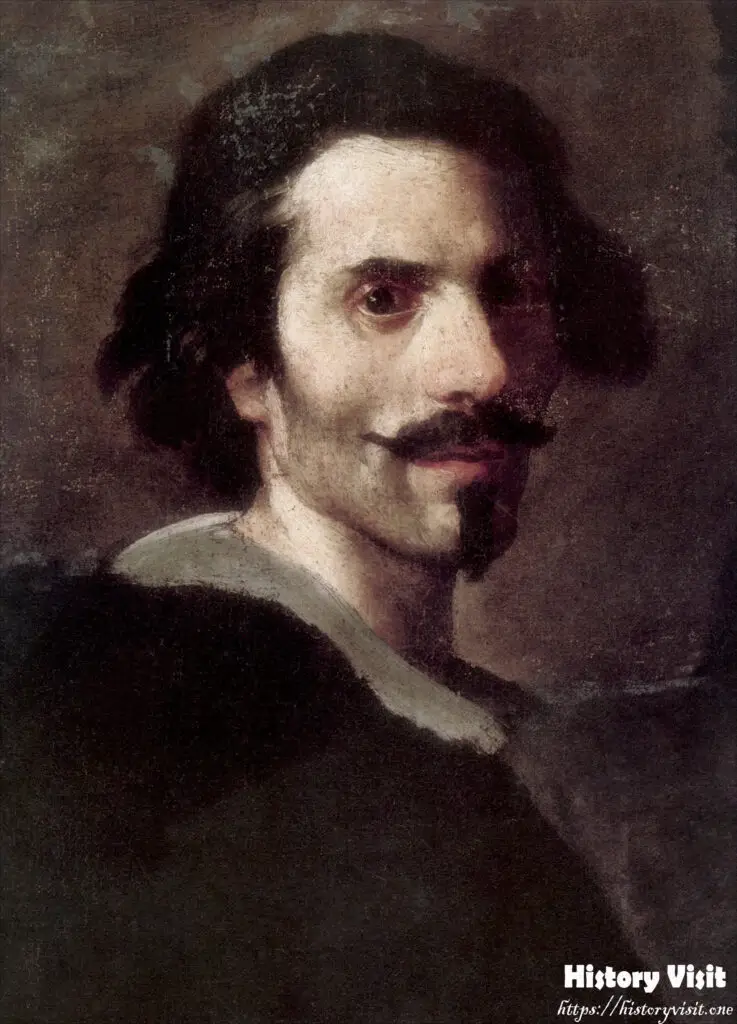
Gian Lorenzo Bernini (1598-1680) stands as one of the towering figures of the Baroque era, leaving an indelible mark on the landscape of art and architecture. As an Italian sculptor, architect, and painter, Bernini’s innovative works transformed the artistic landscape of his time, defining the Baroque aesthetic with his dynamic compositions and emotive expressions. His mastery of marble sculpting and architectural design earned him commissions from powerful patrons, including the papacy. Through his iconic sculptures like “Apollo and Daphne” and architectural marvels such as the Baldacchino in St. Peter’s Basilica, Bernini reshaped the visual language of his era, leaving behind a rich legacy that continues to inspire and captivate audiences centuries later.
Gian Lorenzo Bernini (1598-1680) was an Italian sculptor, architect, and painter who emerged as one of the leading figures of the Baroque period. Born in Naples, Bernini’s talent was evident from a young age, and he quickly gained recognition for his exceptional skills in sculpting and design. His works are characterized by their dynamic compositions, emotional intensity, and intricate detailing, reflecting the Baroque emphasis on drama and theatricality.
Bernini’s career flourished under the patronage of powerful figures, including Pope Urban VIII, for whom he created some of his most renowned sculptures and architectural masterpieces. His sculptures, such as “Apollo and Daphne” and “The Ecstasy of Saint Teresa,” exhibit a remarkable ability to capture movement and emotion in stone, blurring the lines between the natural and the supernatural.
In addition to his contributions to sculpture, Bernini also made significant advancements in architectural design, leaving his mark on the cityscape of Rome with projects like the majestic colonnade of St. Peter’s Square and the ornate Baldacchino inside St. Peter’s Basilica.Throughout his prolific career, Bernini’s innovative approach to art and design helped define the Baroque style and cemented his legacy as one of the most influential artists of his time. His works continue to be celebrated for their technical virtuosity, emotional power, and enduring beauty.
The importance and influence of Gian Lorenzo Bernini’s work in Baroque art and architecture are profound and far-reaching

1. Innovation in Sculpture: Bernini revolutionized sculpture during the Baroque period by infusing it with unprecedented dynamism, emotion, and theatricality. His ability to capture movement, emotion, and narrative in marble was unparalleled, setting a new standard for sculptors of his time and inspiring generations to come.
2. Emotion and Drama: Bernini’s sculptures are renowned for their intense emotional expression and dramatic impact. Through his mastery of form and composition, he conveyed complex narratives and spiritual experiences with unmatched fervor, contributing to the Baroque emphasis on evoking strong emotional responses in viewers.
3. Integration of Architecture and Sculpture: Bernini blurred the boundaries between sculpture and architecture, pioneering a holistic approach to artistic expression that combined both disciplines seamlessly. His architectural designs often incorporated sculptural elements, creating immersive and harmonious environments that engaged viewers on multiple levels.
4. Papal Patronage and Influence: Bernini’s close ties to the papacy, particularly his relationship with Pope Urban VIII and later Pope Alexander VII, afforded him numerous prestigious commissions and elevated his status as the preeminent artist of his time. His works adorned many of Rome’s most prominent churches and public spaces, shaping the city’s visual landscape and cementing his reputation as the foremost exponent of Baroque art and architecture.
5. Legacy and Influence: Bernini’s innovative techniques and aesthetic principles exerted a profound influence on subsequent generations of artists and architects, both within and beyond the Baroque period. His dynamic approach to form, his emphasis on emotional expression, and his integration of sculpture and architecture continue to inspire artists across diverse artistic movements and styles, ensuring his enduring legacy in the history of Western art and architecture.
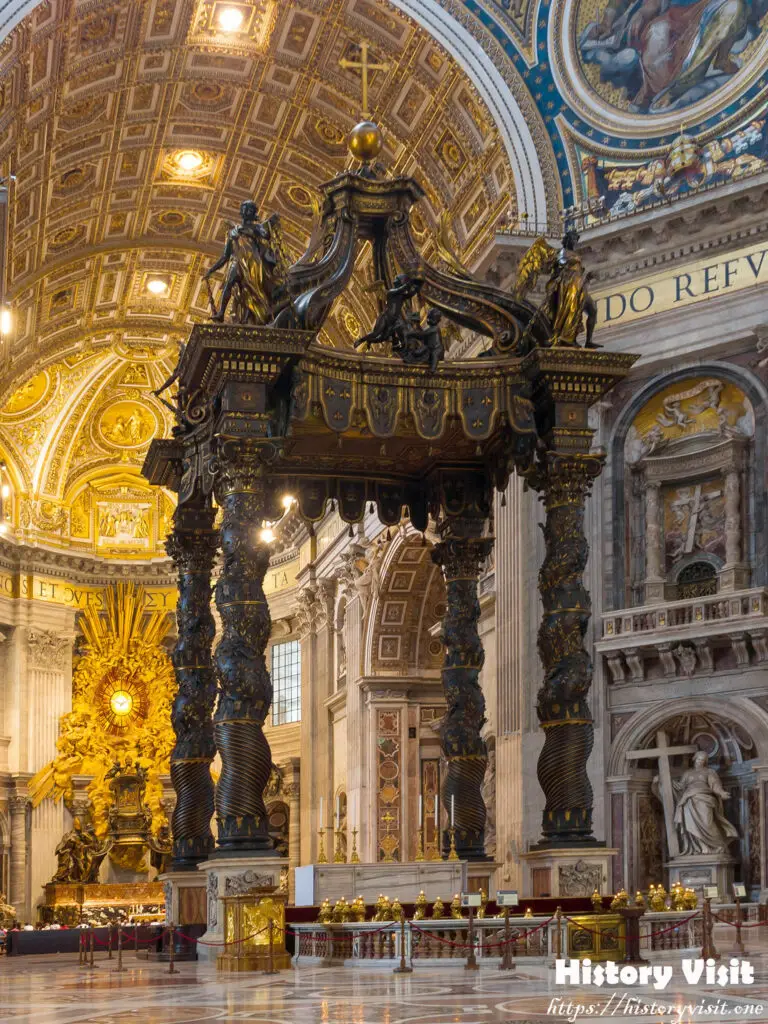
Early Life and Family Background
Gian Lorenzo Bernini was born on December 7, 1598, in Naples, Italy, into a family of artists. His father, Pietro Bernini, was a successful Mannerist sculptor, while his mother, Angelica Galante, hailed from a family of artists as well. Growing up in this artistic milieu, Bernini was exposed to the world of sculpture and art from a young age, fostering his innate talent and passion for artistic expression. At the age of eight, Bernini accompanied his father to Rome, where he was introduced to the vibrant artistic scene of the Baroque period. His early exposure to the works of renowned artists such as Michelangelo and Raphael deeply influenced his artistic development and served as a source of inspiration for his future creations. Under the guidance of his father, Bernini received formal training in sculpture and quickly distinguished himself as a prodigious talent. By his teenage years, he had already begun attracting attention for his remarkable skill and artistic sensibility, earning commissions from prominent patrons in Rome.
Despite his early success, Bernini faced tragedy in his personal life when his mother died in 1607, followed by his father’s death in 1613. These losses marked a turning point in Bernini’s life, prompting him to assume greater responsibility for his family’s artistic workshop and further honing his craft as a sculptor. In the tumultuous artistic and political landscape of Rome, Bernini’s talent and ambition propelled him to prominence, earning him commissions from powerful patrons, including Pope Urban VIII. His early experiences and familial background laid the foundation for his illustrious career, shaping him into one of the most influential artists of the Baroque era.
Education and early artistic influences
Gian Lorenzo Bernini’s education and early artistic influences played a pivotal role in shaping his prodigious talent and innovative style. Bernini received his initial artistic training from his father, Pietro Bernini, a respected Mannerist sculptor, and likely also from other artists in his father’s workshop. His exposure to the artistic environment of Rome, particularly during visits to the city with his father, provided him with invaluable insights into the works of esteemed artists of the Renaissance and Baroque periods, including Michelangelo and Raphael. During his formative years, Bernini immersed himself in the study of classical sculpture and Renaissance art, drawing inspiration from ancient Greek and Roman masterpieces as well as contemporary works by leading artists of his time. He closely studied the techniques and artistic principles of these predecessors, assimilating their influences into his own evolving style.
Bernini’s early artistic influences also extended beyond sculpture to encompass other forms of artistic expression, such as painting and architecture. He demonstrated a keen interest in the works of Renaissance masters like Leonardo da Vinci and Titian, as well as contemporary architects like Carlo Maderno and Francesco Borromini. Through his voracious appetite for learning and his meticulous study of both classical and contemporary art, Bernini cultivated a deep understanding of artistic principles and techniques, laying the groundwork for his subsequent artistic achievements. His early exposure to diverse artistic influences provided him with a rich reservoir of inspiration and knowledge that would inform his groundbreaking contributions to Baroque art and architecture.
Apprenticeship and early career development
During Gian Lorenzo Bernini’s apprenticeship and early career development, he honed his skills as a sculptor and began to establish himself as a rising talent in the artistic circles of Rome. Bernini’s apprenticeship began in his father’s workshop, where he received rigorous training in the art of sculpting and was exposed to various techniques and styles. Under his father’s guidance, he mastered the fundamentals of sculptural craftsmanship and developed a keen eye for detail and composition. As he matured as an artist, Bernini sought to expand his knowledge and refine his technique by studying the works of other prominent sculptors and artists in Rome. He drew inspiration from both classical antiquity and contemporary Baroque innovations, synthesizing diverse influences into his own distinctive style.
Bernini’s early career was marked by a series of successful commissions from influential patrons, including members of the papal court and Roman aristocracy. These early projects allowed him to showcase his burgeoning talent and innovative approach to sculpture, earning him widespread acclaim and recognition within artistic circles. One of Bernini’s early breakthroughs came with his commission for the marble sculpture “Apollo and Daphne,” completed when he was just in his early twenties. This masterpiece demonstrated his ability to capture movement and emotion in stone, foreshadowing the revolutionary contributions he would make to Baroque sculpture.
As Bernini’s reputation continued to grow, he attracted the patronage of powerful figures such as Pope Urban VIII, who became a key supporter of his work. Through prestigious commissions and influential connections, Bernini solidified his position as the preeminent sculptor of his time and embarked on a prolific career that would leave an indelible mark on the history of art.
Major Works in Sculpture
- David (1623)
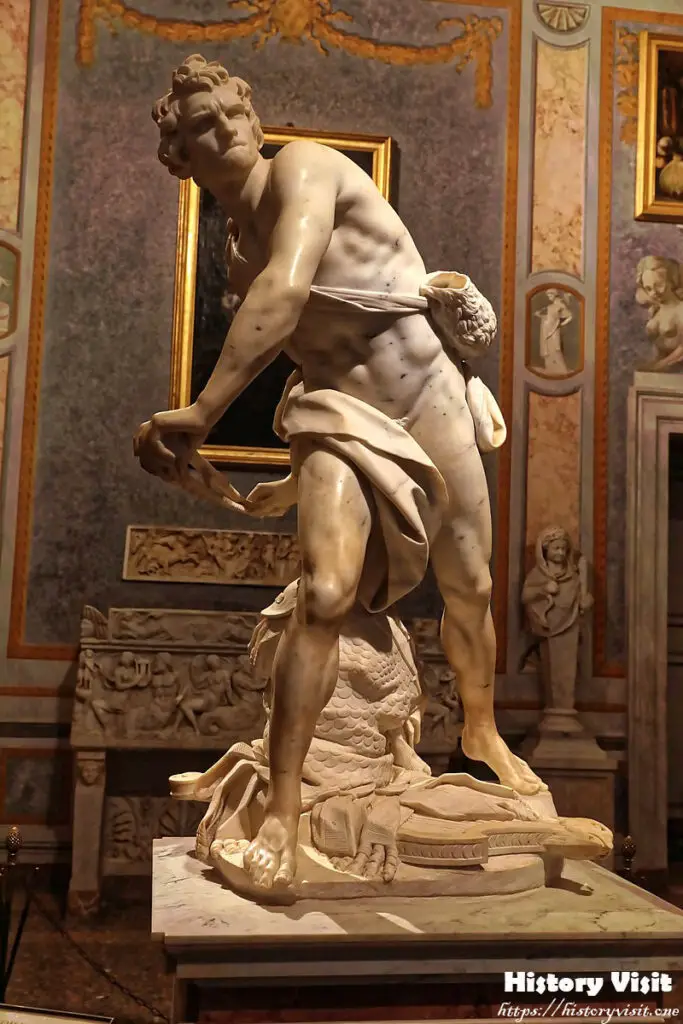
Gian Lorenzo Bernini’s sculpture “David” is one of his most celebrated and iconic works, showcasing his exceptional talent and innovative approach to sculptural composition. Completed in 1623 when Bernini was in his mid-twenties, “David” represents a dramatic reinterpretation of the biblical figure of David, the young shepherd who famously defeated the giant Goliath with a slingshot. Unlike previous depictions of David, which typically portrayed him after his victory, Bernini’s sculpture captures the tense moment just before the battle, as David concentrates intensely, preparing to launch his stone at the giant. Bernini’s portrayal of David is characterized by its dynamic and lifelike quality, with the figure depicted in a state of heightened emotion and physical exertion. Every muscle and sinew of David’s body is rendered with remarkable realism, conveying a sense of movement and tension that is almost palpable. The intense expression on David’s face further adds to the drama of the scene, as he locks eyes with his unseen adversary and prepares to unleash his decisive blow.
The sculpture is notable for its innovative use of space and perspective, with David depicted in the round, allowing viewers to admire the work from all angles. This three-dimensional approach creates a sense of immediacy and intimacy, drawing viewers into the action and heightening the emotional impact of the scene. “David” exemplifies Bernini’s mastery of marble sculpting and his ability to imbue his creations with a sense of vitality and drama. Through this work, Bernini challenged traditional conventions of sculpture, pushing the boundaries of artistic expression and setting new standards for the Baroque aesthetic.
Today, “David” remains on display at the Galleria Borghese in Rome, where it continues to captivate and inspire audiences with its timeless beauty and emotive power, showcasing Bernini’s enduring legacy as one of the greatest sculptors in the history of Western art.
- Apollo and Daphne (1622-1625)
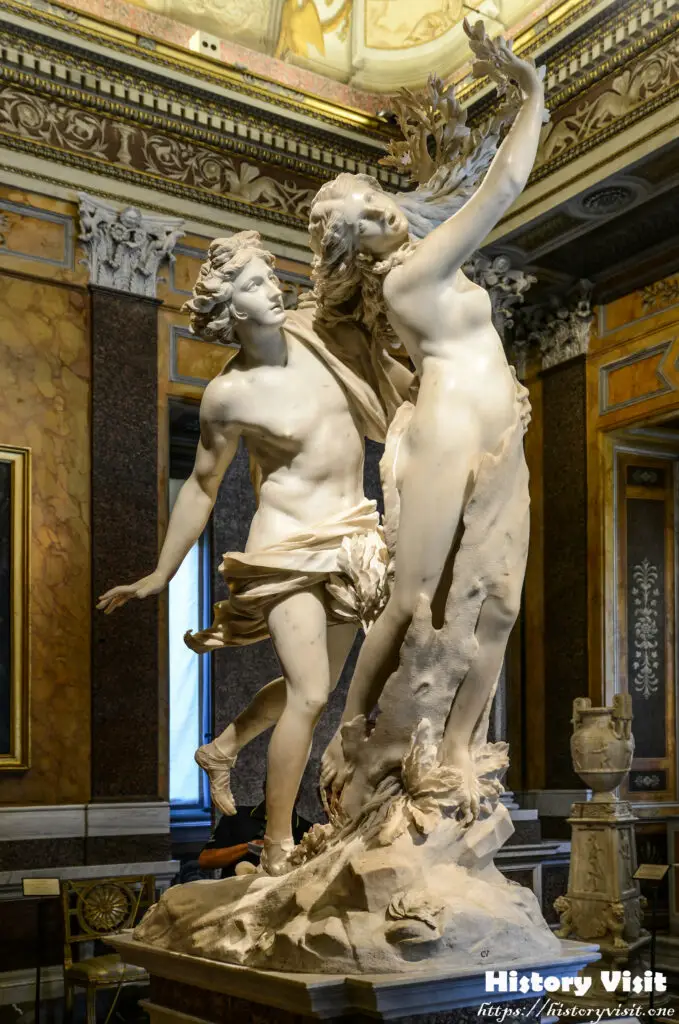
Apollo and Daphne is one of Gian Lorenzo Bernini’s most renowned sculptures, capturing a moment of mythological transformation with breathtaking realism and emotional intensity. Created between 1622 and 1625, this masterpiece is housed in the Galleria Borghese in Rome, where it continues to mesmerize visitors with its dynamic composition and dramatic narrative. The sculpture depicts the mythological tale of Apollo, the god of the sun, music, and poetry, and Daphne, a nymph who was pursued by Apollo after being struck by one of Cupid’s arrows, causing her to spurn his advances and flee. In Bernini’s interpretation, the sculpture freezes the moment when Daphne, on the verge of being overtaken by Apollo, begins to undergo a miraculous transformation into a laurel tree to escape his grasp.
The composition of Apollo and Daphne is a study in contrasts, with Apollo depicted as a dynamic and muscular figure in pursuit, while Daphne’s body twists and contorts in agony as she undergoes her metamorphosis. The sculptural forms are rendered with remarkable naturalism and fluidity, with every detail of the figures’ bodies meticulously rendered in marble, from the texture of their skin to the delicate strands of Daphne’s hair. Bernini masterfully captures the tension and drama of the scene, with Apollo’s outstretched arm almost touching Daphne’s fleeing form, and the leaves and branches of the laurel tree beginning to emerge from her fingertips and hair. The sculpture invites viewers to experience the palpable sense of urgency and emotion as the mythological narrative unfolds before their eyes. Apollo and Daphne exemplifies Bernini’s innovative approach to sculpture, pushing the boundaries of the medium to create a work that is at once dynamic, emotive, and profoundly expressive. Through his skillful manipulation of form and space, Bernini transforms a classical myth into a timeless masterpiece that continues to captivate and inspire audiences centuries after its creation.
- The Ecstasy of Saint Teresa (1647-1652)

“The Ecstasy of Saint Teresa” is one of Gian Lorenzo Bernini’s most celebrated and controversial sculptures, renowned for its emotive power and exquisite craftsmanship. Created between 1647 and 1652, this masterpiece is housed in the Cornaro Chapel of the Church of Santa Maria della Vittoria in Rome, where it continues to captivate visitors with its transcendent beauty and spiritual intensity. The sculpture depicts a pivotal moment from the life of Saint Teresa of Ávila, a 16th-century Spanish mystic and Carmelite nun who experienced ecstatic visions and mystical encounters with the divine. In Bernini’s interpretation, Saint Teresa is shown reclining on a cloud, her head thrown back in ecstasy as she experiences a divine vision. An angel stands beside her, poised to pierce her heart with a golden arrow, symbolizing the ecstatic union of the saint’s soul with the divine. Bernini’s portrayal of Saint Teresa is characterized by its theatricality and emotional intensity, with the figures rendered in intricate detail and imbued with a sense of supernatural grace and beauty. The interplay of light and shadow further enhances the drama of the scene, casting the figures in a soft, ethereal glow that heightens the sense of mysticism and wonder.
The sculpture is housed within a specially designed niche adorned with stucco and marble embellishments, creating a harmonious and immersive environment that complements the spiritual significance of the subject matter. The architectural setting enhances the theatrical impact of the sculpture, drawing viewers into the mystical world of Saint Teresa’s ecstatic vision. “The Ecstasy of Saint Teresa” exemplifies Bernini’s mastery of sculpture and his ability to convey complex emotions and spiritual experiences with unparalleled skill and sensitivity. Through his innovative use of form, composition, and light, Bernini transforms a religious subject into a transcendent work of art that continues to inspire awe and reverence in viewers to this day.
- Fountain of the Four Rivers (1648-1651)

The Fountain of the Four Rivers is one of Gian Lorenzo Bernini’s most monumental and iconic sculptures, representing the pinnacle of his achievements in the realm of public art and urban design. Created between 1648 and 1651, this grandiose fountain stands in the center of Piazza Navona in Rome, serving as a majestic centerpiece for the bustling square. Commissioned by Pope Innocent X, the Fountain of the Four Rivers was designed to symbolize the four major rivers of the world, each representing a different continent known at the time. The rivers depicted are the Nile, representing Africa; the Ganges, representing Asia; the Danube, representing Europe; and the Río de la Plata, representing the Americas. These rivers are personified in the form of towering marble figures, each adorned with symbolic attributes that reflect their respective regions. At the center of the fountain stands an imposing obelisk crowned with a dove, symbolizing the peace and harmony that the church aims to bring to the world. Surrounding the obelisk are four colossal statues representing the four rivers, each positioned around a towering rock formation that supports the obelisk. The figures are depicted in various states of motion and contemplation, evoking a sense of dynamic energy and vitality.
The Fountain of the Four Rivers is celebrated for its dramatic composition, exquisite detail, and masterful integration of sculpture and architecture. The dynamic interplay of light and shadow further enhances the sculptural ensemble, creating a sense of drama and spectacle that captivates viewers from all angles. Beyond its aesthetic beauty, the fountain also serves as a testament to Bernini’s skill as an urban planner and designer, transforming the Piazza Navona into a vibrant and dynamic public space that continues to attract visitors from around the world. The Fountain of the Four Rivers stands as a testament to Gian Lorenzo Bernini’s enduring legacy as one of the greatest sculptors and architects of the Baroque era, a masterpiece that continues to inspire awe and admiration centuries after its creation.
- Other notable sculptures and commissions
Gian Lorenzo Bernini’s oeuvre encompasses numerous notable sculptures and commissions beyond his well-known masterpieces. Here are some other significant works:
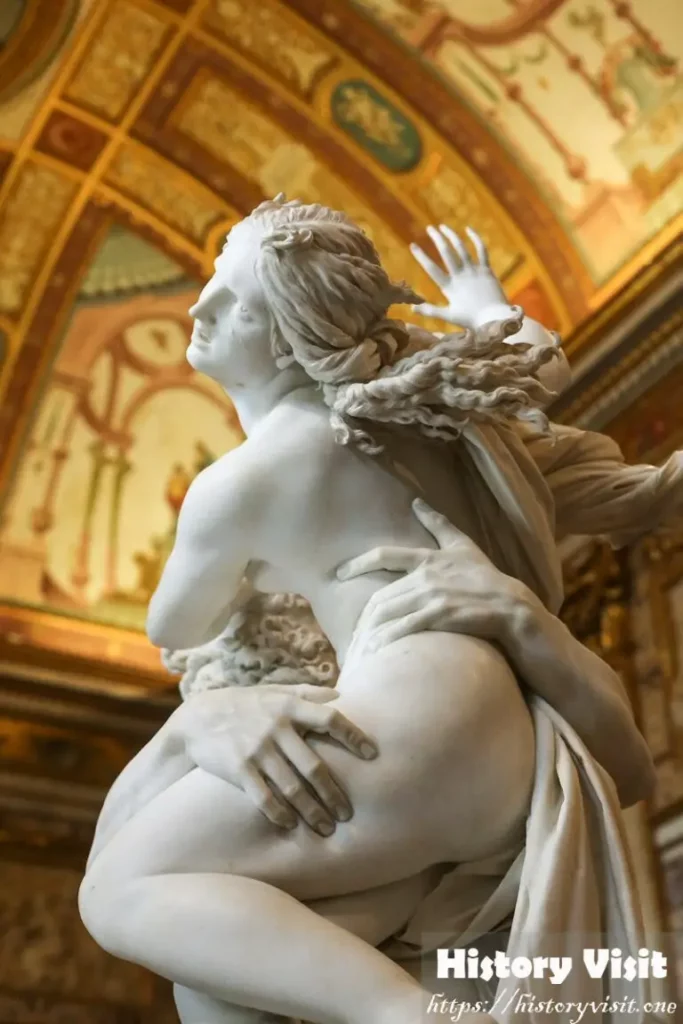
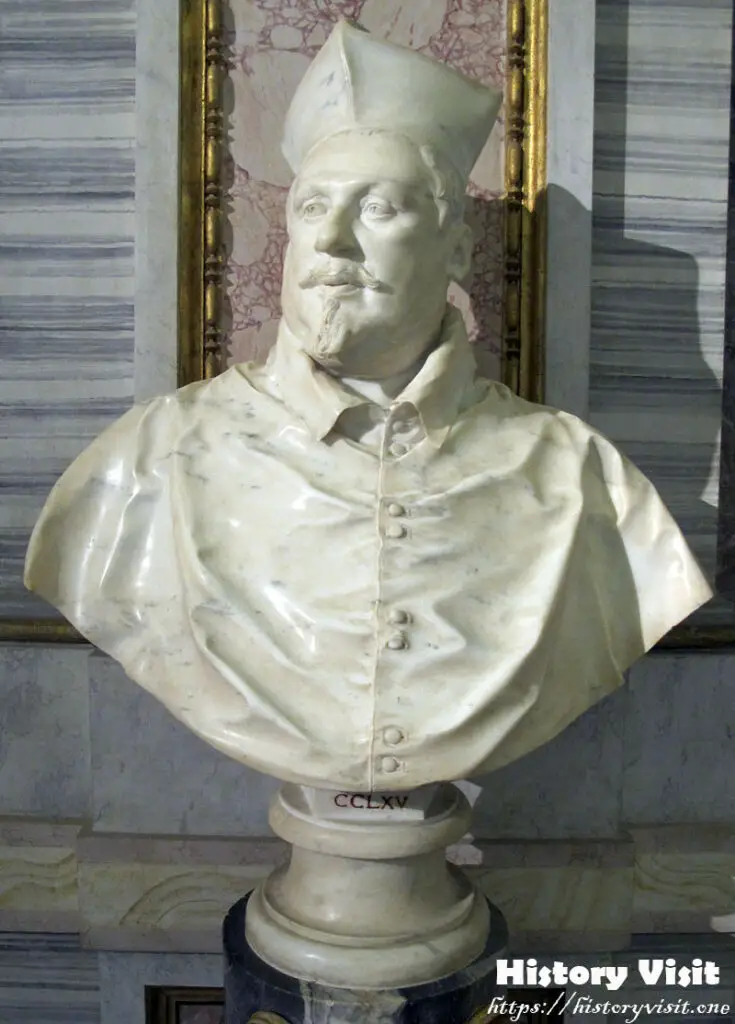
- The Rape of Proserpina (1621-1622)
This sculpture depicts the abduction of Proserpina by Pluto, the god of the underworld, from Roman mythology. Bernini captures the moment of physical and emotional tension as Pluto’s hand grips Proserpina’s flesh, conveying a sense of urgency and drama. - Bust of Cardinal Scipione Borghese (1632)
Commissioned by Cardinal Scipione Borghese, this bust exemplifies Bernini’s skill in capturing the likeness and character of his subjects. The bust showcases intricate details, such as the cardinal’s facial features and the finely sculpted robes, demonstrating Bernini’s mastery of portraiture. - Bust of Louis XIV (1665)
Created during Bernini’s later years, this bust of King Louis XIV of France showcases the artist’s ability to convey regal majesty and authority through sculpture. The bust captures the king’s likeness with remarkable accuracy, portraying him in a dignified and imposing manner. - Angel with the Crown of Thorns (1667-1669)
Located in the church of Sant’Andrea delle Fratte in Rome, this sculpture depicts an angel holding a crown of thorns, symbolizing the Passion of Christ. The angel’s expression of sorrow and compassion reflects Bernini’s ability to evoke emotion through sculptural form. - Monument to Pope Alexander VII (1671-1678)
Commissioned by Pope Clement X in honor of his predecessor, Pope Alexander VII, this monumental funerary monument is located in St. Peter’s Basilica. The monument features a reclining figure of the deceased pope, surrounded by allegorical figures representing Virtue, Truth, and Charity, among others.
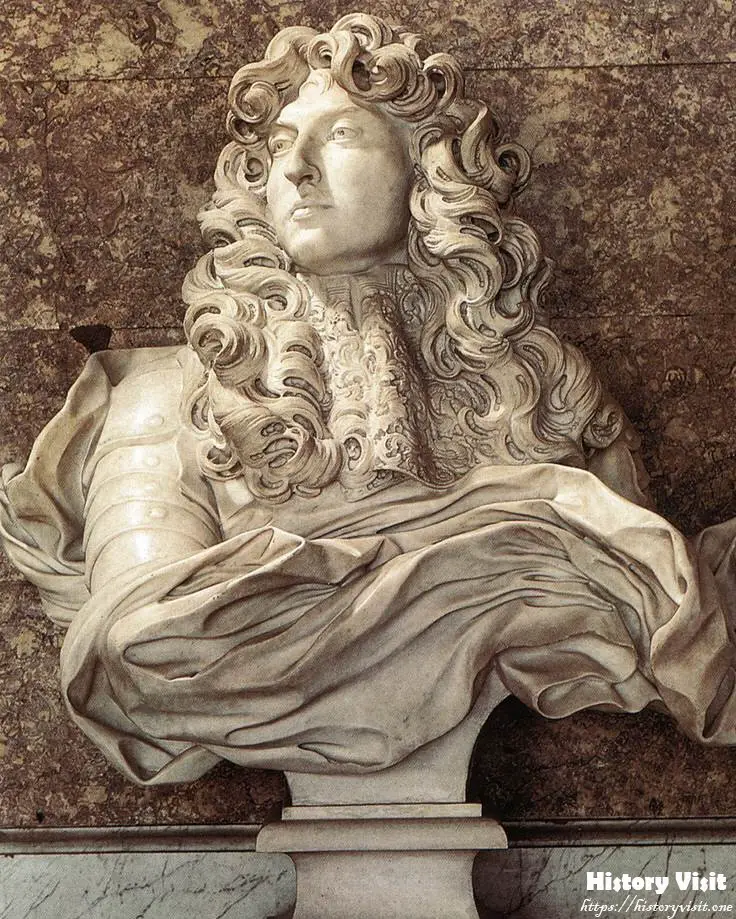
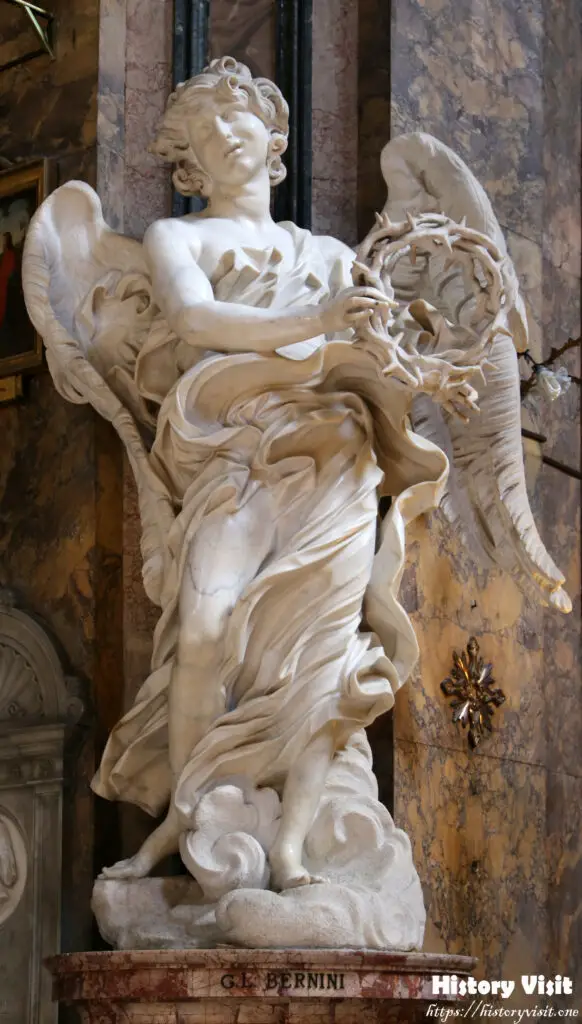

These works, along with numerous others, demonstrate Bernini’s versatility as a sculptor and his ability to tackle a wide range of subjects and themes with equal skill and innovation. From mythological narratives to religious iconography to portraiture, Bernini’s sculptures continue to captivate and inspire audiences with their beauty, craftsmanship, and emotional depth.
Architectural Achievements
Gian Lorenzo Bernini’s architectural achievements are as monumental as his sculptures, showcasing his mastery of space, form, and grandeur. Here are some of his notable architectural contributions:
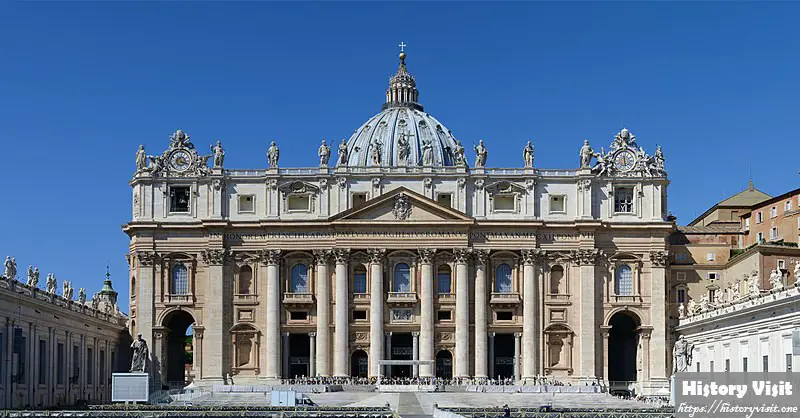

- St. Peter’s Basilica and the Baldacchino (1624-1633): Bernini’s early architectural masterpiece was the design and construction of the Baldacchino, a towering bronze canopy located over the high altar of St. Peter’s Basilica in Vatican City. This monumental structure, standing at approximately 30 meters (98 feet) tall, serves as a symbol of the papal authority and a focal point for the basilica’s interior. Bernini’s design seamlessly integrates sculpture and architecture, creating a harmonious and awe-inspiring space within the largest church in the world.
- Sant’Andrea al Quirinale (1658-1670): Commissioned by the Jesuits, Sant’Andrea al Quirinale is a small but exquisite church in Rome designed by Bernini. The church’s elliptical plan and oval dome, along with its lavish interior decoration, reflect Bernini’s innovative architectural vision and his ability to create dynamic and immersive spaces that inspire spiritual contemplation.
- St. Peter’s Square (1656-1667): Bernini’s redesign of St. Peter’s Square transformed the approach to St. Peter’s Basilica, creating a grand ceremonial space that serves as a fitting prelude to the monumental church. The square features a sweeping colonnade composed of four rows of columns topped with statues of saints, embracing visitors and drawing them towards the basilica. Bernini’s design also includes an Egyptian obelisk and two fountains, further enhancing the grandeur and symmetry of the space.
- Palazzo Barberini (1627-1633): Bernini played a significant role in the design and construction of Palazzo Barberini, a grand palace in Rome commissioned by the Barberini family. While the palace was primarily designed by Carlo Maderno and Francesco Borromini, Bernini contributed to the interior decoration, including the design of the central hall known as the Salone, showcasing his talent for creating opulent and elegant spaces.
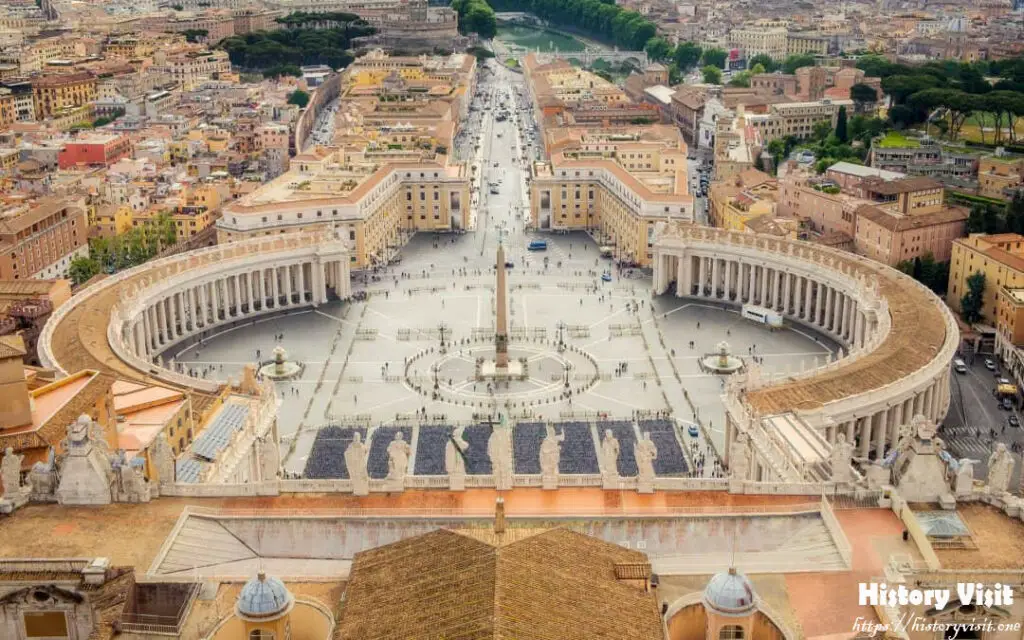
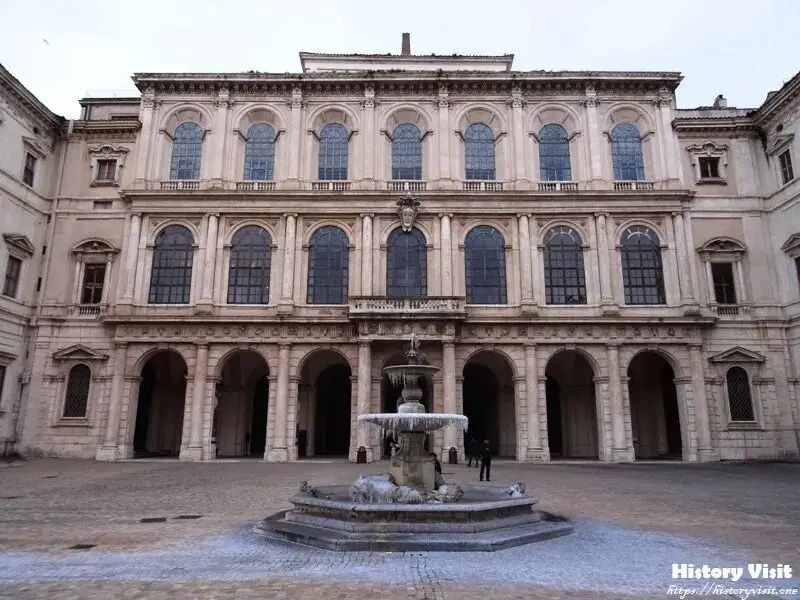
Through these architectural achievements, Bernini left an indelible mark on the cityscape of Rome and the history of Western architecture, demonstrating his ability to create monumental and immersive environments that continue to inspire awe and admiration centuries after their creation.
Influence and Legacy
Gian Lorenzo Bernini’s influence and legacy extend far beyond his own lifetime, shaping the course of Western art and architecture for centuries to come. Here’s how his contributions continue to reverberate:
1. Baroque Art and Architecture
Bernini’s innovative approach to sculpture and architecture defined the Baroque aesthetic, characterized by dramatic movement, emotional intensity, and theatricality. His dynamic compositions and bold use of space set new standards for artists and architects of the Baroque period, inspiring countless imitators and establishing a visual language that would dominate European art for generations.
2. Integration of Sculpture and Architecture
Bernini’s holistic approach to artistic expression, which seamlessly integrated sculpture and architecture, revolutionized the way artists conceived of and created monumental works. His ability to harmonize these two disciplines in projects like the Baldacchino in St. Peter’s Basilica and the Fountain of the Four Rivers set a precedent for subsequent generations of artists seeking to create immersive and cohesive environments.
3. Papal Patronage and Influence
Bernini’s close ties to the papacy, particularly his relationships with Popes Urban VIII and Alexander VII, elevated his status as the preeminent artist of his time and afforded him numerous prestigious commissions. His works adorned many of Rome’s most prominent churches and public spaces, shaping the city’s visual landscape and reinforcing the power and prestige of the Catholic Church.
4. Continued Reverence and Scholarship
Bernini’s works continue to be celebrated and studied by scholars, art historians, and enthusiasts around the world. His sculptures and architectural masterpieces are prized for their technical virtuosity, emotional depth, and timeless beauty, ensuring his enduring relevance and influence in the annals of art history.
5. Inspiration for Future Generations
Bernini’s innovative techniques and aesthetic principles have inspired generations of artists and architects across diverse artistic movements and styles. His dynamic approach to form, his emphasis on emotional expression, and his integration of sculpture and architecture remain sources of inspiration for contemporary practitioners seeking to push the boundaries of artistic expression.

Summary of Gian Lorenzo Bernini’s contributions to art and architecture
Gian Lorenzo Bernini, the quintessential Baroque artist, made monumental contributions to both art and architecture that continue to shape and inspire the world of aesthetics. Here’s a summary of his key contributions.
1. Revolutionizing Sculpture
Bernini transformed the art of sculpture with his dynamic compositions, emotive expressions, and lifelike realism. Through masterpieces like “Apollo and Daphne” and “The Ecstasy of Saint Teresa,” he imbued marble with movement and emotion, setting new standards for sculptural excellence.
2. Blurring Boundaries
Bernini seamlessly integrated sculpture and architecture, creating immersive environments that captivated viewers and elevated the spiritual experience. His works, such as the Baldacchino in St. Peter’s Basilica and the Fountain of the Four Rivers, showcased his visionary approach to spatial design.
3. Theatricality and Drama
Bernini’s sculptures and architectural designs are marked by their intense emotional depth and theatricality, reflecting the Baroque emphasis on drama and movement. His ability to evoke powerful emotional responses in viewers transcended the confines of his time, resonating with audiences across generations.
4. Papal Patronage and Prestige
Bernini’s close ties to the papacy and his commissions from powerful patrons elevated his status as the preeminent artist of his time. His works adorned many of Rome’s most prominent churches and public spaces, reinforcing the power and prestige of the Catholic Church.
5. Enduring Legacy
Bernini’s legacy extends far beyond his own lifetime, with his works continuing to be revered and studied by scholars, artists, and enthusiasts worldwide. His innovative techniques, profound emotional insight, and timeless beauty ensure his enduring relevance and influence in the history of Western art and architecture.
In summary, Gian Lorenzo Bernini’s contributions to art and architecture are monumental, shaping the Baroque aesthetic and leaving an indelible mark on the world of aesthetics that continues to inspire and captivate audiences centuries later.


